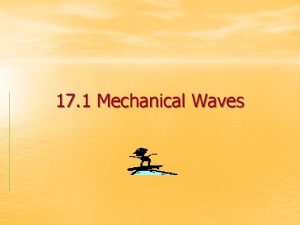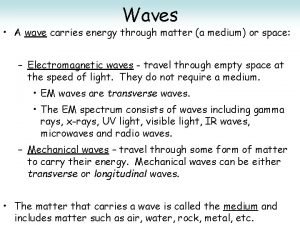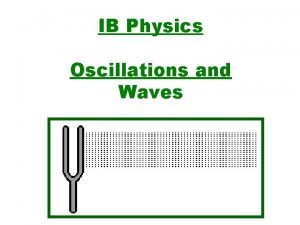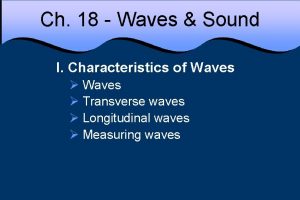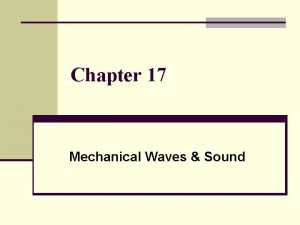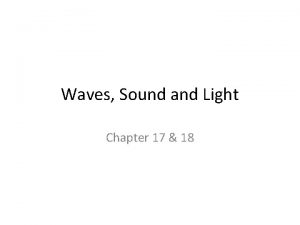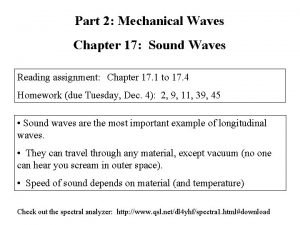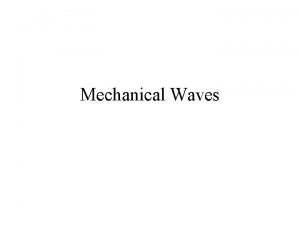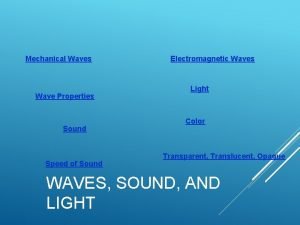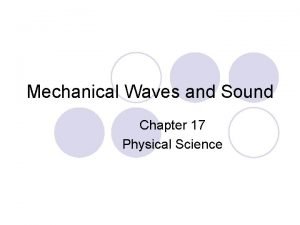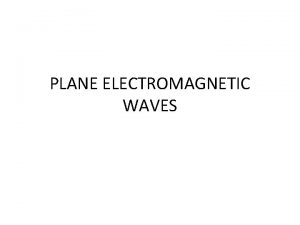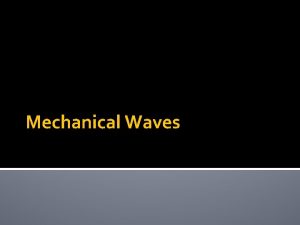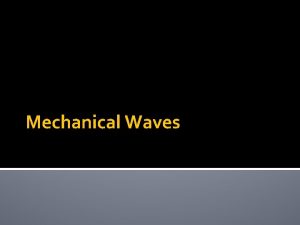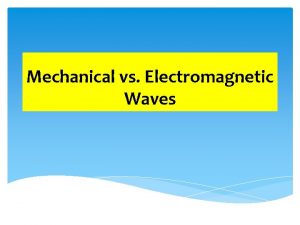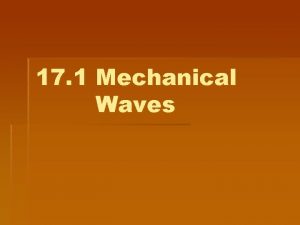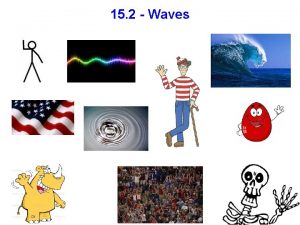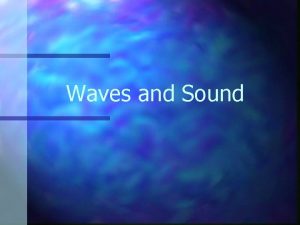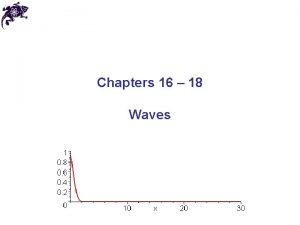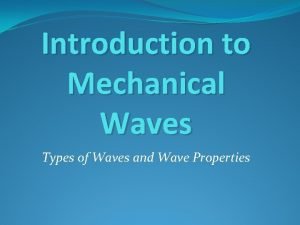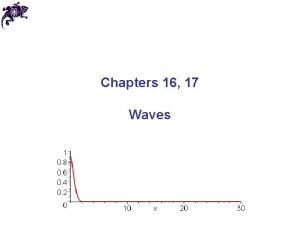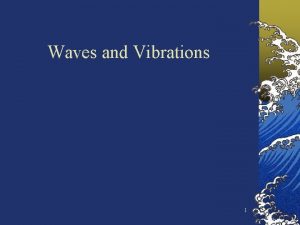Waves Types of Waves Mechanical waves require a






















- Slides: 22

Waves

Types of Waves • Mechanical waves = require a medium to travel (air, water, ropes, etc) – Transverse waves – Longitudinal waves • Electromagnetic waves = do NOT require a medium (light, radio waves, microwaves, etc)

Transverse Waves • Cause medium to move perpendicular (90 o) to direction of wave

Longitudinal Wave • Cause medium to move parallel to direction of wave • Sound waves are longitudinal

Comparing Waves

Electromagnetic Waves • Do NOT require a medium • Can transmit energy in a vacuum (empty space) • vibration of charged particles

Crests and Troughs • Crest = Highest point of a sound wave on graph • Trough = Lowest point of a sound wave on graph

Amplitude • Maximum movement of a sound wave from rest.

Wavelength (l) • distance between any two consecutive locations on the wave. – crest to next crest – trough to next trough – start of wave cycle to next starting point

Crest Trough Rarefaction Horizontal Axis: time in seconds Vertical Axis: molecular movement Crest: higher pressure Trough: lower pressure Amplitude: height of wave; intensity Compression • • •

Frequency (f ) • Number of complete waves (or cycles) • how many waves per second • 1 Hertz (Hz) = 1 cycle/second • If ten waves are made per second, then the frequency (f ) = 10 Hz

Frequency • Human hearing 20 Hz – 20, 000 Hz • Subsonic = below 20 Hz – Ex: wind, earthquakes • Ultrasonic = above 20, 000 Hz – Ex: Sonar, echolocation, ultrasound

Intensity • Amount of energy of a sound • Measured in Decibels (d. B) • Some sounds with high intensity may be considered noise.

Loud Soft

Standing Wave • Standing waves appear not to move.

Let’s compare waves Lower f Higher l Lower l Amplitude same

Let’s compare waves Lower f Higher l Higher Amplitude Higher f Lower l Lower Amplitude

Let’s compare waves Lower f Higher l Lower Amplitude Higher f Lower l Higher Amplitude

Let’s compare waves Higher f Lower l Lower Amplitude Lower f Higher l Higher Amplitude

Which wave has the highest f?

Which wave has the highest amplitude?

Which wave has the lowest l?
 What do mechanical waves require
What do mechanical waves require Transverse waves move perpendicular
Transverse waves move perpendicular An example for mechanical wave
An example for mechanical wave Mechanical waves and electromagnetic waves similarities
Mechanical waves and electromagnetic waves similarities Difference between matter waves and electromagnetic waves
Difference between matter waves and electromagnetic waves Mechanical vs electromagnetic
Mechanical vs electromagnetic Mechanical and electromagnetic waves similarities
Mechanical and electromagnetic waves similarities Is a seismic wave mechanical or electromagnetic
Is a seismic wave mechanical or electromagnetic Mechanical and electromagnetic waves
Mechanical and electromagnetic waves Sound waves are electromagnetic waves true or false
Sound waves are electromagnetic waves true or false Type of wave
Type of wave What waves don't require a medium
What waves don't require a medium What waves don't require a medium
What waves don't require a medium Characteristics of a longitudinal wave
Characteristics of a longitudinal wave Types of mechanical waves
Types of mechanical waves What is mechanical wave
What is mechanical wave What are the 4 main types of assistance that users require?
What are the 4 main types of assistance that users require? Actual mechanical advantage vs ideal mechanical advantage
Actual mechanical advantage vs ideal mechanical advantage The maximum distance a wave varies from its rest position
The maximum distance a wave varies from its rest position Chapter 17 mechanical waves and sound
Chapter 17 mechanical waves and sound What is mechanical wave
What is mechanical wave Mechanical wave energy
Mechanical wave energy Chapter 17 physical science
Chapter 17 physical science
